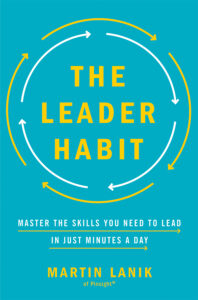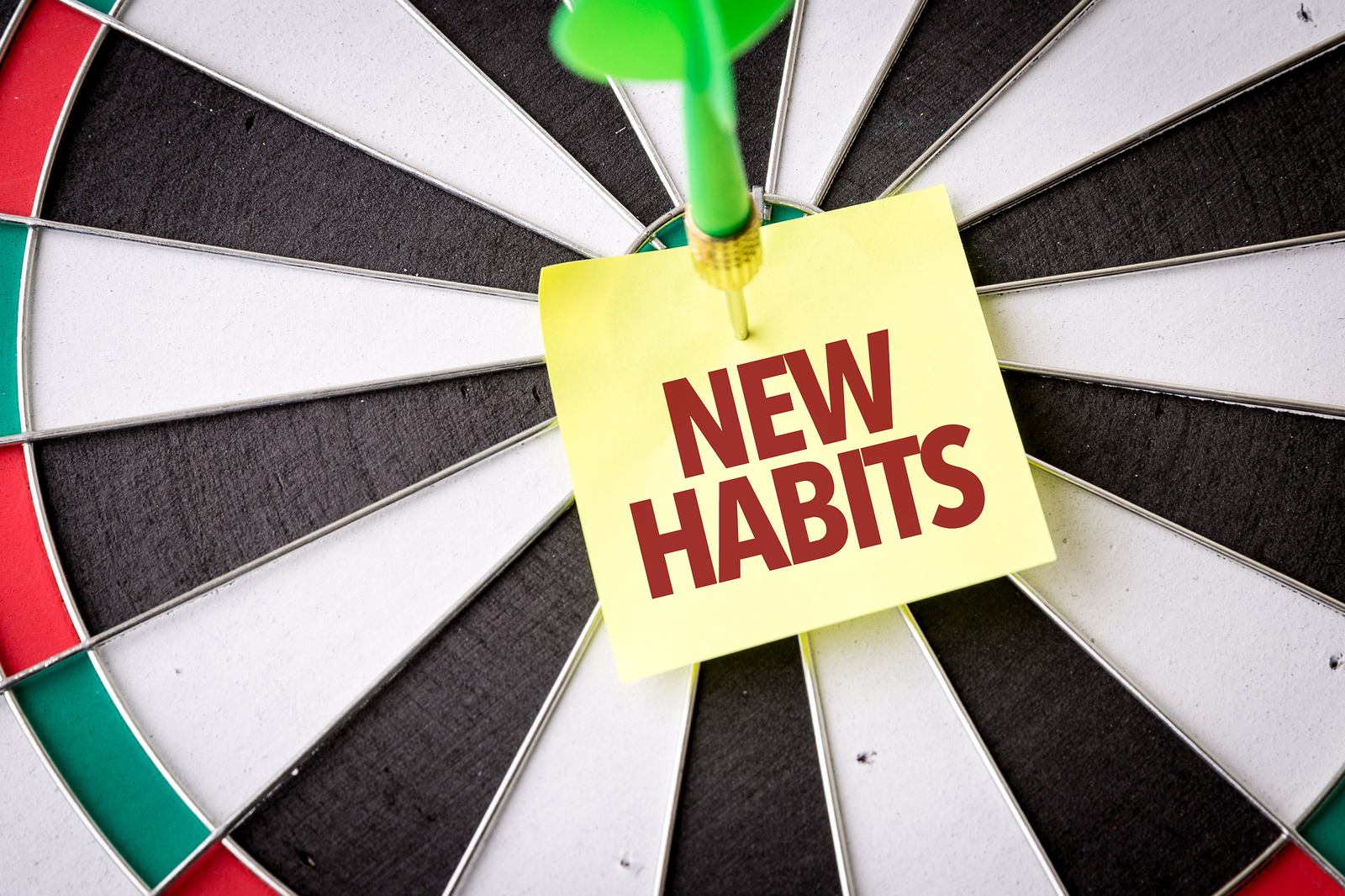Master the Skills to Lead
We generally don’t think of leadership as a habit, but it’s time that we do. How we get things done at work, and how we manage people, is the result of habits – and those habits can be purposefully changed.
Martin Lanik is an organizational psychologist and the CEO of Pinsight®, a global leadership software-as-service company known for its disruptive HR technology. His new book, THE LEADER HABIT: Master the Skills You Need to Lead in Just Minutes a Day, shares the science behind how people develop habits and shows you how to develop key leadership skills through simple, daily exercises.
Why Most Leadership Programs Fail
Why do most leadership development programs fail?
There are two main reasons why most leadership development programs fail. First, they rely mainly on classroom training and workshops that focus on acquisition of knowledge. Not only do we forget 85% of what we learn within one week, but knowledge also doesn’t equal skill. Knowledge doesn’t make us better at actually doing things. One of the examples I use in THE LEADER HABIT comes from music education: You can take classes on proper piano-playing techniques and watch YouTube videos, but that won’t make you a concert pianist. You must actually touch the keyboard and practice every day. But even more importantly, traditional leadership development fails to take into account the overwhelming influence that habits have on our daily behavior. It assumes that we rationally decide how we behave at work and in life. But research suggests that almost half of our everyday behavior is actually unconscious and automatic. No amount of classroom instruction alone can build effective leadership habits.
Tell us more about the latest science on learning and the development of the Leader Habit Formula.
Leadership, at its core, is a set of habits. How we interact with coworkers, customers, how we answer the phone, make decisions, plan and delegate work, or empower our employees are all to some degree influenced by habits. Positive habits make us better leaders, while negative habits hinder our performance. In the research we did for THE LEADER HABIT and for our online leadership training platform, we identified the 22 core leadership skills and the underlying micro-behaviors that effective leaders possess. By associating each micro-behavior with a natural cue and then deliberately practicing this pairing every day for 66 days, anyone can turn these effective leadership behaviors into habits. Once the new habits take root, people perform these effective leadership behaviors automatically, without having to rely on reminders, or even thinking about them. They just happen as seamlessly as making your bed in the morning.
What are some ways to incorporate this science into today’s training programs?
Training professionals should think about what happens after the class or workshop. What will happen with the concepts? How can you help learners turn these concepts into habits, so that they stick? The Leader Habit Formula tells us to distill the main concepts into specific actions or thoughts, associate them with a cue, and then ask learners to practice the pairing once per day for 66 days. For example, if you are teaching leaders how to delegate better, distill the knowledge about effective delegation into one actionable behavior. For example, we found that effective leaders tell employees what to do but not how to do it when they delegate projects and tasks (otherwise it’s micromanagement). Then associate the action with a specific cue, such as when the learner decides to delegate a project or task. And there you have a Leader Habit exercise that anyone can practice: After deciding to delegate a project or task, describe what needs to be accomplished but let the employee figure out how to do it. If the learners practice this exercise for 66 days, they form a new habit and become better at delegating. It’s that simple.
22 Core Skills of Successful Leaders
You’ve identified 22 core skills that are the most common among successful leaders. How did you pinpoint them?
As a starting point, my research team reviewed decades of leadership research that tested which behaviors distinguish between effective and ineffective leaders in terms of top and bottom line performance. We initially identified 159 different micro-behaviors. Then we tested almost 800 leaders from around the world in a standardized, live simulation to identify which leadership behaviors are the most important. Through this research, we narrowed down the list to 79 key micro-behaviors that make up the 22 core leadership skills. Then we wrote a Leader Habit exercise for each micro-behavior, so that people could easily turn it into a habit by practicing for only a few minutes a day.
Does a leader need to build all 22 skills? How can someone determine which skills he or she should focus on first?
The leader’s personality determines which behaviors come to him or her naturally. In our research, we found that many leaders possess certain skills already, but they need to work on others. Generally speaking, the skills cluster around two main leadership styles – focusing on results vs. focusing on people. Practicing all 22 core leadership skills and their 79 underlying micro-behaviors for 66 days adds up to 14 years of practice! Of course, that is not sustainable. So the key to success is finding what Charles Duhigg called a keystone habit in his bestseller The Power of Habit. Finding a keystone habit can start a chain reaction, wherein the learner develops many new skills naturally, resulting in a complete life transformation. I recommend using a live simulation assessment to identify which micro-behaviors have the highest potential to become the learner’s keystone habit. This type of simulation is the starting point of our online platform – we then use the assessment results to generate a plan that is customized to the individual’s personality, strengths, and weaknesses.
For each skill, you’ve also identified specific “micro-behaviors.” Can you give us an example of a skill and its component micro-behaviors?
For example, a common leadership skill is empowering employees. In our research study, we found that leaders who empower employees share decision-making authority with them, so that employees don’t feel overwhelmed by responsibility at one extreme or micromanaged on the other. This can be done with a brief conversation – ask the employee which decisions related to the assignment he or she is comfortable making. For instance, you could clarify that the employee is comfortable making decisions about travel purchases under $2,000.
To implement your process, you advocate that people develop what you call a Leader Habit “workout.” Why do you call it a workout? What does it entail?
I call it a “workout” to remind the learner that the Leader Habit Formula is about acquiring and strengthening leadership skills through daily, deliberate practice. It’s no different from building physical strength by targeting specific muscle groups during a workout at the gym. It entails picking a single Leader Habit exercise (natural cue paired with a specific action) and practicing the pairing once per day for 66 days, until it become automatic and the learner does it without thinking – until it turns into a lasting habit. In THE LEADER HABIT, I help people decide which exercises should be part of their personalized “workout.”
Ask Open-Ended Questions
Would you share one or two of the habits? Let’s take “Ask Open-Ended Questions.” What leadership skill does this habit build?
Sure. Asking open-ended questions is a habit that strengthens active listening, which is a core leadership skill. As a leader, you don’t have all the answers, and you need to consult others and learn from them – and you can only do that with strong listening skills. Open-ended questions encourage people to talk more and create opportunities for genuine conversation because they require more than a simple yes-or-no answer. The Leader Habit exercise for this micro-behavior is: After realizing that you want to ask a question (cue), start it with the words “what” or “how” (behavior). If you practice this simple exercise once per day for 66 days, it will become second nature, and you strengthen your listening skills.
When Less is More
You say that “when it comes to practice, less is always more” which is counterintuitive. Why is this? How do you temper someone’s enthusiasm if they want to do as much as possible right away?
 It is counterintuitive, indeed, to say that “when it comes to practice, less is always more.” However, people’s enthusiasm generally only lasts a few days. Even the most exciting and rewarding activities require motivation for us to do them. And people’s motivation varies significantly throughout the day and day over day. To form a habit, the most important thing is to keep practicing for 66 days, or until the behavior becomes automatic. And, therefore, we need to plan for the days when our motivation is at its all-time low, when we are tired, stressed, or just have too much going on. The exercise needs to be simple and quick enough so that we do it even on days when we don’t have the energy to do anything else.
It is counterintuitive, indeed, to say that “when it comes to practice, less is always more.” However, people’s enthusiasm generally only lasts a few days. Even the most exciting and rewarding activities require motivation for us to do them. And people’s motivation varies significantly throughout the day and day over day. To form a habit, the most important thing is to keep practicing for 66 days, or until the behavior becomes automatic. And, therefore, we need to plan for the days when our motivation is at its all-time low, when we are tired, stressed, or just have too much going on. The exercise needs to be simple and quick enough so that we do it even on days when we don’t have the energy to do anything else.
For more information, see THE LEADER HABIT: Master the Skills You Need to Lead in Just Minutes a Day.

